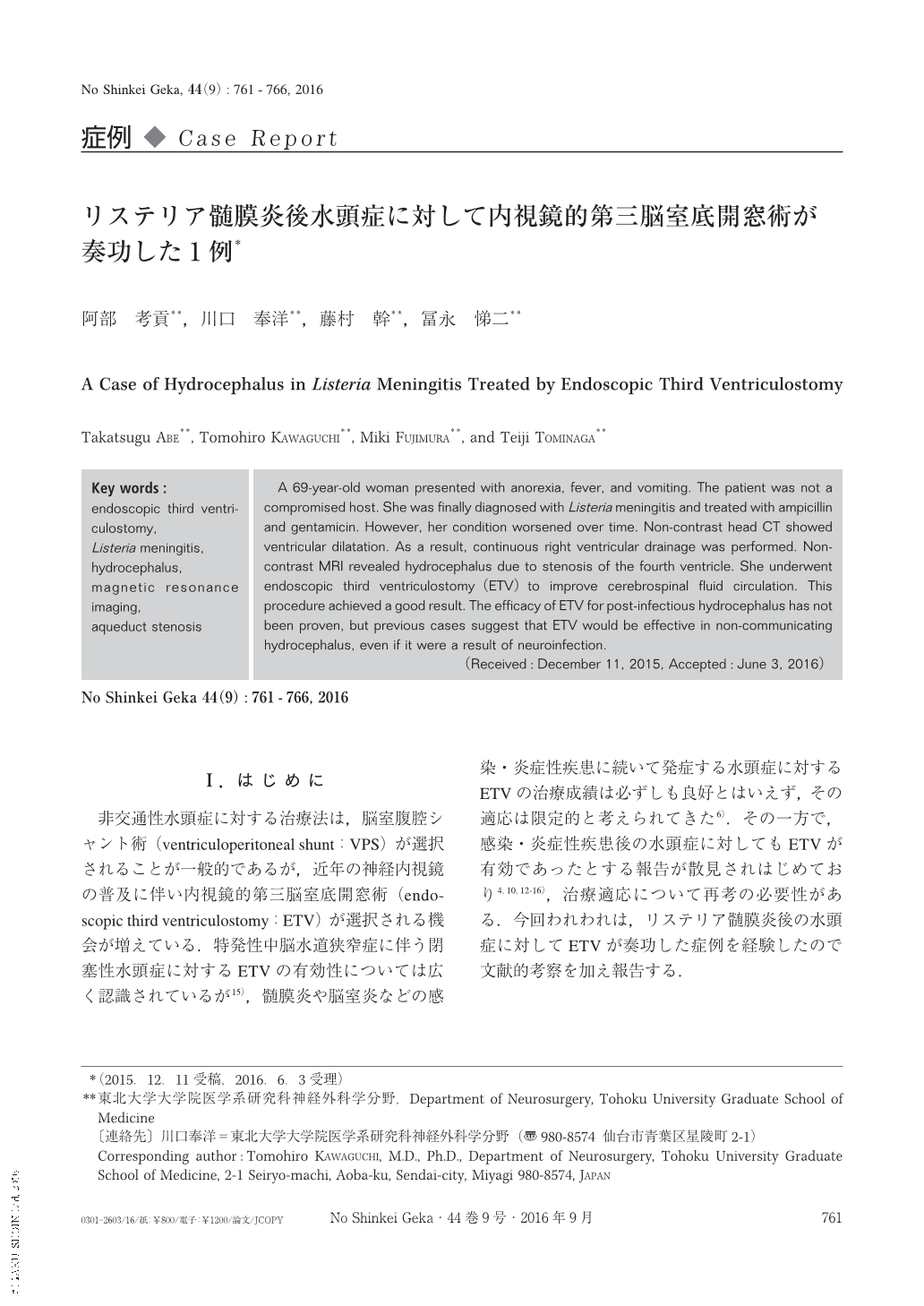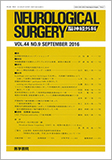Japanese
English
- 有料閲覧
- Abstract 文献概要
- 1ページ目 Look Inside
- 参考文献 Reference
Ⅰ.はじめに
非交通性水頭症に対する治療法は,脳室腹腔シャント術(ventriculoperitoneal shunt:VPS)が選択されることが一般的であるが,近年の神経内視鏡の普及に伴い内視鏡的第三脳室底開窓術(endoscopic third ventriculostomy:ETV)が選択される機会が増えている.特発性中脳水道狭窄症に伴う閉塞性水頭症に対するETVの有効性については広く認識されているが15),髄膜炎や脳室炎などの感染・炎症性疾患に続いて発症する水頭症に対するETVの治療成績は必ずしも良好とはいえず,その適応は限定的と考えられてきた6).その一方で,感染・炎症性疾患後の水頭症に対してもETVが有効であったとする報告が散見されはじめており4,10,12-16),治療適応について再考の必要性がある.今回われわれは,リステリア髄膜炎後の水頭症に対してETVが奏功した症例を経験したので文献的考察を加え報告する.
A 69-year-old woman presented with anorexia, fever, and vomiting. The patient was not a compromised host. She was finally diagnosed with Listeria meningitis and treated with ampicillin and gentamicin. However, her condition worsened over time. Non-contrast head CT showed ventricular dilatation. As a result, continuous right ventricular drainage was performed. Non-contrast MRI revealed hydrocephalus due to stenosis of the fourth ventricle. She underwent endoscopic third ventriculostomy(ETV)to improve cerebrospinal fluid circulation. This procedure achieved a good result. The efficacy of ETV for post-infectious hydrocephalus has not been proven, but previous cases suggest that ETV would be effective in non-communicating hydrocephalus, even if it were a result of neuroinfection.

Copyright © 2016, Igaku-Shoin Ltd. All rights reserved.


